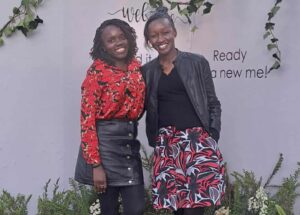
In my first year of high school, a girl called Barbara Diero and I were often mistaken for sisters. We had similar features: tall, slender and dark-skinned, with matching hairstyles. Both of us also bore the burden of sickle cell disease, which forged a deeper bond.
The disease manifested differently in each of us. Barbara suffered painful leg ulcers and slower speech and movement, while my symptoms were less conspicuous. “We will fight this,” I’d tell her, and she would smile her beautiful, infectious smile, which would become a cherished memory.
Sickle cell is the most common inherited haematological disorder in Kenya. It affects haemoglobin, the protein that carries oxygen in the body. Due to a genetic mutation, abnormal red blood cells become sickle-shaped and rigid, blocking small blood vessels and impairing blood flow, which then causes painful crises.
According to the World Health Organization, sickle cell disease affects nearly 100 million people worldwide. Each year more than 300,000 children are born with this disease, more than 70% in sub-Saharan Africa, though the disease also affects people with southern European, Middle Eastern, Asian, Latin American and Caribbean backgrounds.
Without routine newborn screening and access to proper treatment, more than half of those in sub-Saharan Africa die undiagnosed before reaching their fifth birthday.
About 14,000 children are born in Kenya with sickle cell disease each year, the health ministry says. In rural areas, access to medical treatment is a challenge and often not the best quality.
My medical life has been in two parts: pre-18 and post-18. My childhood was riddled with urgent visits to hospital. Having parents with medical insurance and living in Nairobi – where most of the best hospitals are – was a big plus. I had access to private hospitals and effective pain medication. With good city roads, the hospital was easily accessible.
Before 18, diet was key. Pain crises break down the body – whenever pain strikes, you cannot use that body part for a week or two. To manage that, my diet – and in turn my family’s – had to change. We ate iron-rich foods, such as liver, beets and fish (not fried), complemented by daily consumption of porridge. Everything in my diet was traditional. Cheat days were on Saturdays, Christmas and birthdays.
